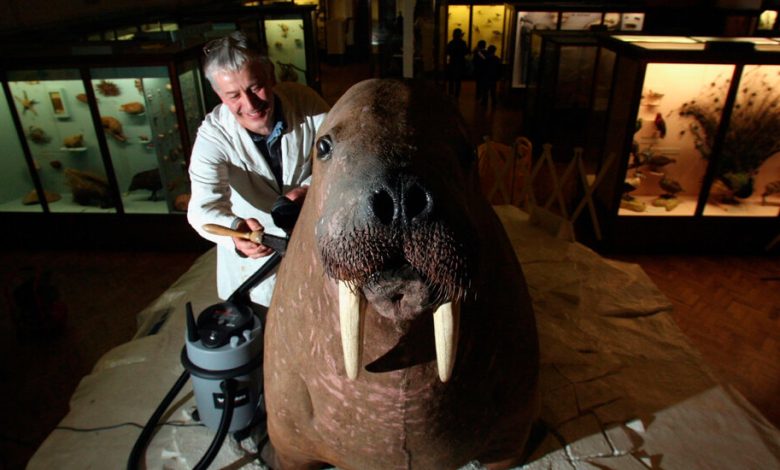London Bids Farewell, for Now, to a Beloved, Overstuffed Walrus

Southeast London has temporarily lost one of its most famous residents: A giant taxidermy walrus that has been on display for more than a century.
For most of the past 120 years, the walrus has sat in the middle of the Natural History Gallery at the Horniman Museum and Gardens. The museum displays the collection of Frederick Horniman, a wealthy tea trader who lived in Victorian England.
The gallery, which in addition to the walrus holds other taxidermy animals, skeletons and insects, is being shuttered while the museum redevelops the space, with a focus on “environmental sustainability and a commitment to fighting the climate emergency,” according to the museum’s website. (The rest of the museum, which also includes a large collection of musical instruments and an aquarium, will remain open.)
When the gallery reopens, in 2026, visitors will be able to see the walrus in the same spot where they left him — sitting prominently in the middle of the room atop a fake iceberg, said Louis Buckley, a senior curator at the museum. The collection will include more context about how Mr. Horniman came to own the walrus. The museum’s website notes that Mr. Horniman’s wealth was “reliant on the exploitation of people living in the British Empire.”
“It’s an expression in many ways of the British Empire and its relationship with the colonies and Canada in particular,” Mr. Buckley said.
During his lifetime, Mr. Horniman amassed a collection of ethnographic objects, natural history specimens and musical instruments. When his collection grew too large to fit in his home, he commissioned architects to build a museum, which opened in 1901.
